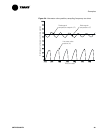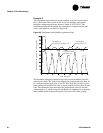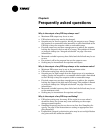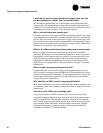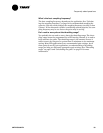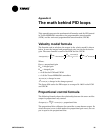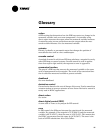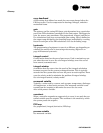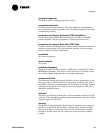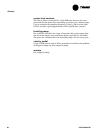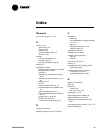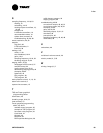
CNT-APG002-EN 57
®
Glossary
action
A PID setting that determines how the PID loop reacts to a change in the
measured variable (such as a room temperature). A controller using
direct action increases the output when the measured variable increases.
A controller using reverse action decreases the output when the mea-
sured variable increases. See also measured variable.
actuator
Electric, hydraulic, or pneumatic motor that changes the position of
moveable devices such as valves and dampers.
cascade control
A method of control in which one PID loop calculates a setpoint for use by
other PID loops or control systems. Cascade control is used in applica-
tions that require tight control; the response to error is aggressive.
conversion function
The part of a PID loop that converts the measured variable to the same
units of measurement as the setpoint. The result of the conversion func-
tion is called the measured variable or process variable.
deadband
See error deadband.
derivative control
Control action based on the rate of change of the error. Used to smooth an
actuator motion or cause an actuator to react faster. Derivative control is
rarely used in HVAC applications.
direct action
See action.
direct digital control (DDC)
A term used at Trane as a synonym for PID control.
error
In PID control, the difference between the setpoint and the measured
variable. For example, if the setpoint is 75°F (23.9°C) and the measured
variable is 65°F (18.3°C), then the error is 10°F (5.6°C). This means that
the HVAC system must heat the space by 10°F (5.6°C). The error is the
basis of all PID calculations. Also called offset.



